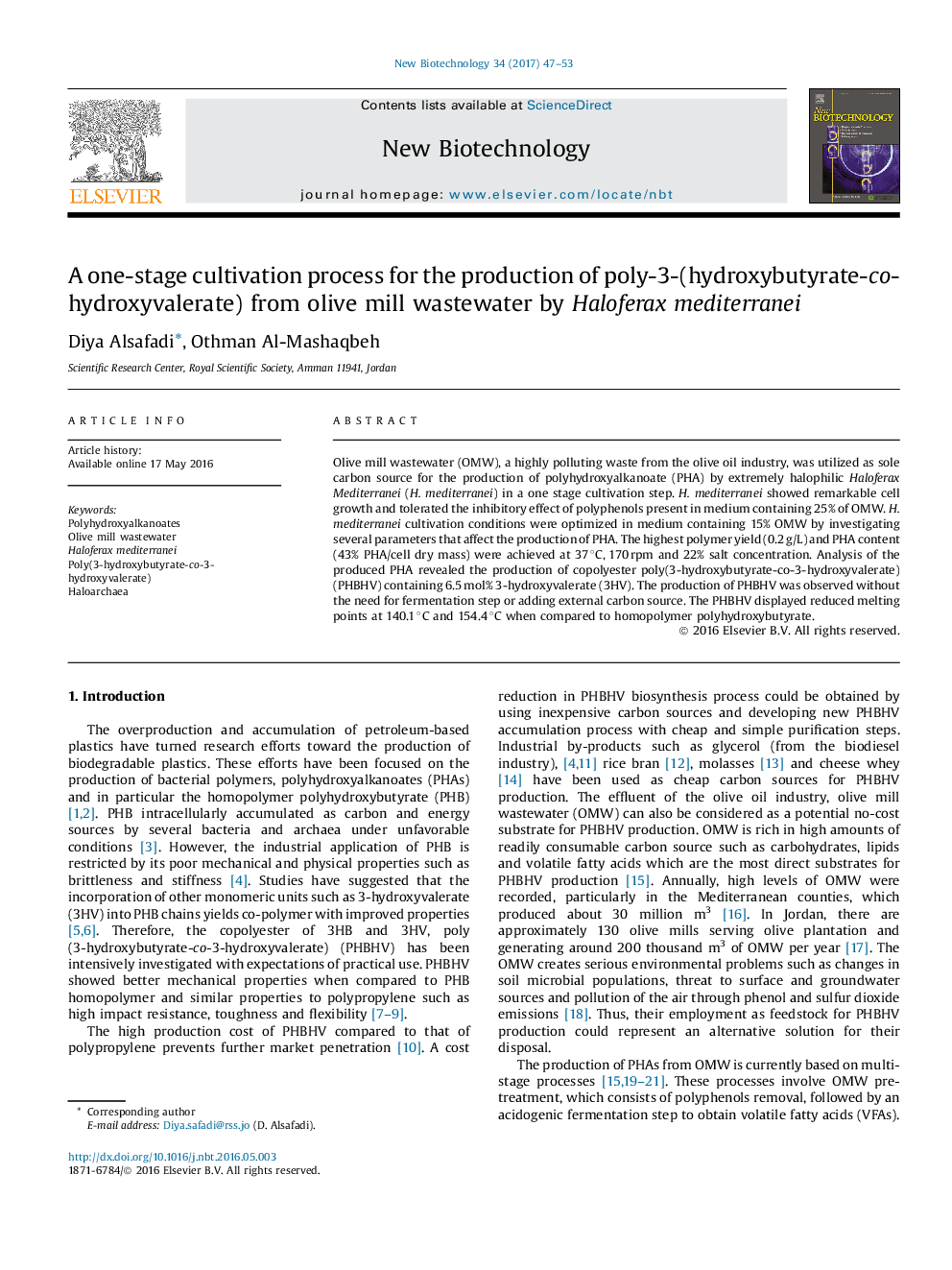| Article ID | Journal | Published Year | Pages | File Type |
|---|---|---|---|---|
| 4754956 | New Biotechnology | 2017 | 7 Pages |
â¢OMW was used for production of poly(3-hydroxybutyrate-co-3-hydroxyvalerate) by H. mediterranei in one stage cultivation step.â¢OMW was used directly, thereby saving an additional costly dephenolization and fermentation steps.â¢H. mediterranei tolerates the inhibitory effect of polyphenols present in medium containing 25% of OMW.â¢High pure polymer with 6.5 mol% of 3-hydroxyvalarate was observed without adding any extra carbon source.
Olive mill wastewater (OMW), a highly polluting waste from the olive oil industry, was utilized as sole carbon source for the production of polyhydroxyalkanoate (PHA) by extremely halophilic Haloferax Mediterranei (H. mediterranei) in a one stage cultivation step. H. mediterranei showed remarkable cell growth and tolerated the inhibitory effect of polyphenols present in medium containing 25% of OMW. H. mediterranei cultivation conditions were optimized in medium containing 15% OMW by investigating several parameters that affect the production of PHA. The highest polymer yield (0.2 g/L) and PHA content (43% PHA/cell dry mass) were achieved at 37 °C, 170 rpm and 22% salt concentration. Analysis of the produced PHA revealed the production of copolyester poly(3-hydroxybutyrate-co-3-hydroxyvalerate) (PHBHV) containing 6.5 mol% 3-hydroxyvalerate (3HV). The production of PHBHV was observed without the need for fermentation step or adding external carbon source. The PHBHV displayed reduced melting points at 140.1 °C and 154.4 °C when compared to homopolymer polyhydroxybutyrate.
